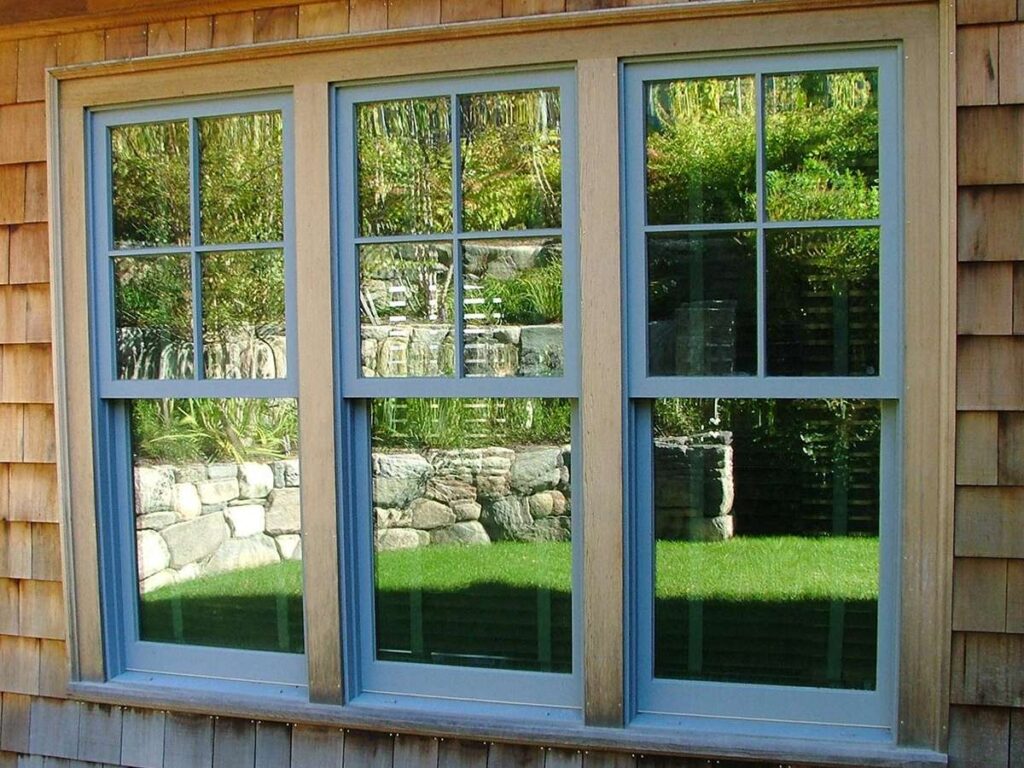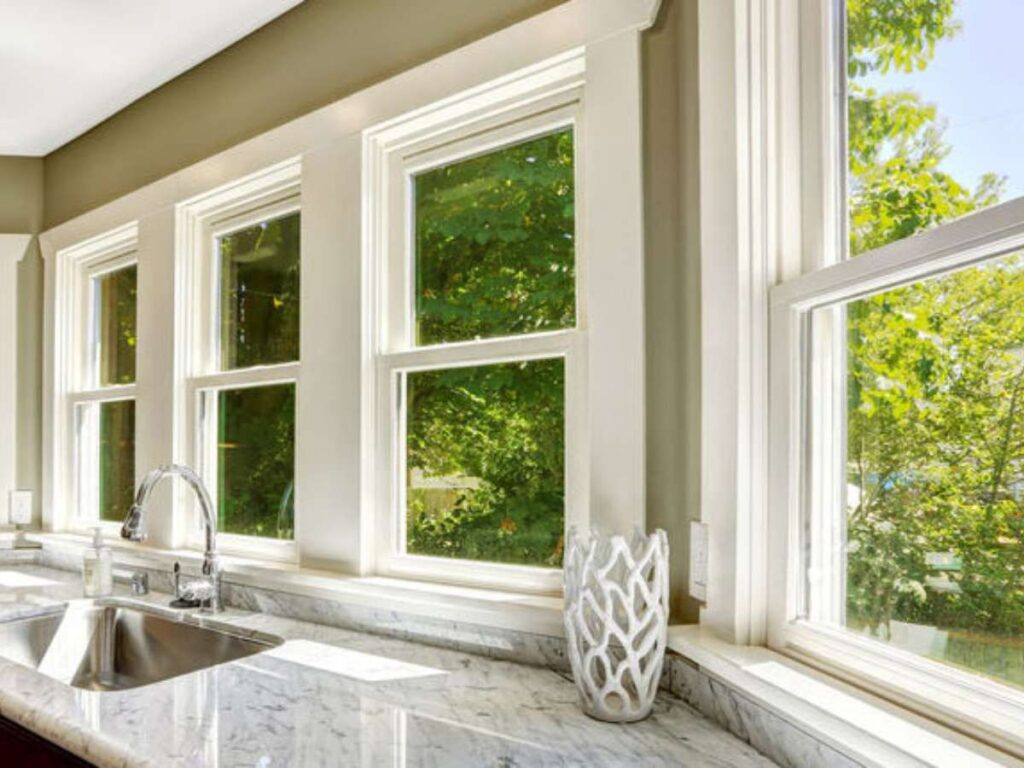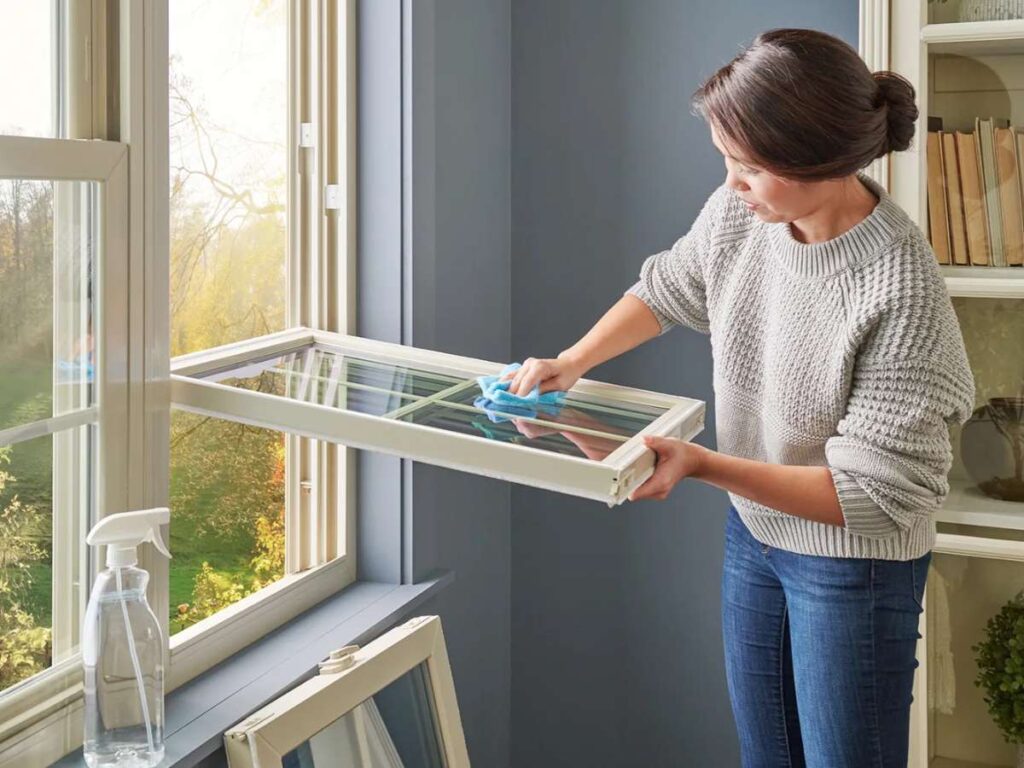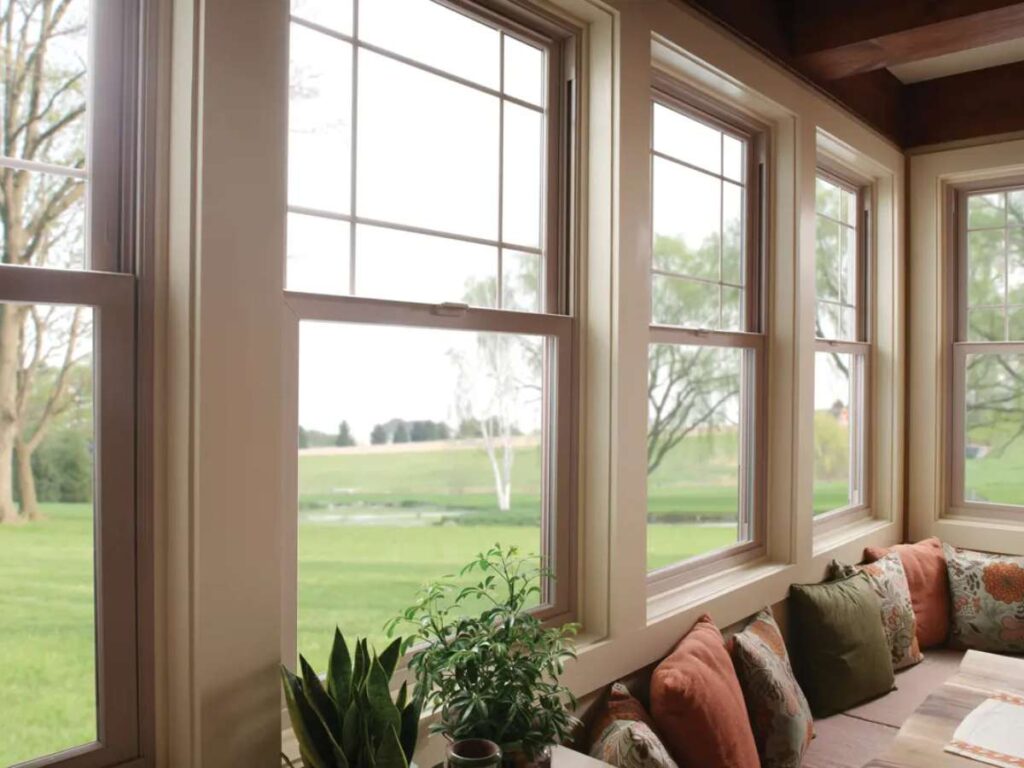I once gave the green light on single hung windows for a multi-unit build. Three months later, the maintenance team wasn’t too happy.
That project taught me fast: one window style doesn’t fit all.
Since then, I’ve reviewed hundreds of product specs, worked side by side with installers, and learned what manufacturers won’t tell you upfront.
So you’re not getting fluff, you’re getting field-tested insights.
You’ll get a clear side-by-side on how single and double hung windows compare in use, performance, cost, and long-term impact. This isn’t just theory, it’s what matters when windows meet real-world work.
If you’ve ever been stuck choosing between two “lookalike” products, you’ll want this breakdown.
So let’s get started!
Quick Comparison Chart
Here’s a quick comparison table to help you see the key differences between single hung and double hung windows at a glance. This breakdown can guide your team in choosing what best fits your project’s needs, based on function, budget, and maintenance priorities.
| Feature | Single Hung Window | Double Hung Window | Best For | Cost |
| Ventilation | Only bottom sash opens, offering limited airflow. | Both sashes open, giving better control over air circulation. | Projects with basic airflow needs | Lower upfront cost |
| Cleaning Access | Top sash is fixed, harder to clean from inside on upper floors. | Both sashes tilt inward for easier interior cleaning. | Low-maintenance buildings | Fewer moving parts |
| Energy Efficiency | Fewer moving parts often mean tighter air sealing. | More points of movement may require extra attention to sealing. | Budget-focused efficiency goals | More efficient by design |
| Design Flexibility | Simple design, fewer style options. | Greater variety in sizes, finishes, and grille styles. | Basic or consistent design builds | More economical |
| Maintenance Needs | Less hardware means fewer repairs over time. | More parts, but easier upkeep for cleaning and ventilation. | Properties with limited service staff | Lower long-term service |
| Overall Value | Cost-effective, functional, and simple. | Higher versatility, better user experience long term. | High-use or tenant-facing spaces | Depends on model selected |
1. What Is a Double Hung Window?
A double hung window is a type of window where both the top and bottom sashes can slide up and down. That means you can open it from the top, the bottom, or both, giving you more control over airflow. It’s a popular choice in commercial builds where ventilation and easy cleaning matter. You can also tilt both sashes inward, which makes maintenance a whole lot easier, especially in multi-story buildings.
If you’re looking for a window that’s flexible, easy to use, and low hassle, a double hung window might be just what your project needs.
2. What Is a Single Hung Window?
A single hung window looks a lot like a double hung, but there’s one key difference: the top sash stays fixed and only the bottom sash moves. So, you can only open it from the bottom. It’s a simpler design that usually comes with a lower price tag, which is why a lot of builders go for it when budget is tight.
It still offers decent airflow and works well in spots where you don’t need as much ventilation or cleaning access. If you’re after a straightforward, cost-effective window option, single hung could be the right fit for your project.

3. Ventilation and Airflow Control
When you’re picking windows for a commercial space, airflow is a big deal. Whether it’s for comfort, code, or keeping energy costs down, how much control you get over ventilation can make or break your choice. Here’s how single and double hung windows stack up.
Airflow Flexibility
- Single Hung: Since only the bottom sash opens, you get less flexibility with airflow. It’s enough for basic ventilation but not ideal when you want to control air movement more precisely.
- Double Hung: With both sashes operable, you can open the top, the bottom, or both at once. Vallisco’s double hung windows are designed for smooth operation and balanced ventilation, making them a smart choice for commercial spaces that need reliable airflow.
Energy and Comfort Control
- Single Hung: You’ll get standard ventilation that works fine in smaller or low-traffic areas. It may not be the best for spaces where airflow really matters, like kitchens or break rooms.
- Double Hung: These windows offer improved comfort by letting warm air escape from the top and cooler air enter through the bottom. Great choice when you need to manage indoor temps naturally.
Takeaway
When it comes to airflow and comfort, double hung windows clearly offer more control and flexibility. They’re a solid fit for commercial spaces where ventilation plays a big role in tenant comfort or compliance. If airflow is a top priority on your project, Vallisco’s double hung options are well worth considering.

4. Ease of Cleaning and Maintenance
When you’re managing multiple units or large-scale builds, easy maintenance isn’t just a perk—it’s a priority. The right window choice can cut down labor time, reduce service calls, and keep property teams happy. Here’s how single and double hung windows measure up in commercial settings.
Cleaning Access
- Single Hung: Only the bottom sash opens, so cleaning the top sash usually means accessing it from outside. For multi-story buildings or tight exterior spaces, that adds time, cost, and potential safety concerns.
- Double Hung: Both sashes tilt inward, letting your maintenance crew clean inside and out from indoors. That’s a big win when you’re managing high-traffic facilities or tall structures.
Ongoing Maintenance
- Single Hung: Fewer moving parts means fewer chances for breakdowns. If you’re aiming to minimize maintenance schedules and service costs across multiple units, this can be a smart choice.
- Double Hung: More flexibility comes with more hardware. While they require a bit more upkeep, they offer long-term convenience that’s worth it for buildings focused on tenant satisfaction and operational ease.
Takeaway:
For commercial properties where routine upkeep matters, double hung windows make cleaning and maintenance much easier. Their tilt-in design saves time and lowers risk, especially in taller buildings. If long-term convenience and smoother operations are key goals, Vallisco’s double hung models deliver real value.

5. Energy Efficiency and Sealing
Energy costs can add up fast across a commercial property, especially if the windows aren’t doing their job. Proper sealing and insulation don’t just help with utility bills,they also support HVAC performance and tenant comfort. Here’s how single and double hung windows compare when it comes to energy efficiency.
Sealing Performance
- Single Hung: With only one operable sash, there are fewer areas for air to leak through. This often leads to a tighter overall seal, which can help reduce energy loss in controlled environments.
- Double Hung: Because both sashes move, there’s more opportunity for air to seep through if not properly installed or maintained. That said, quality double hung units with good seals can still perform well in energy-focused builds.
Thermal Control
- Single Hung: Single hung windows offer solid thermal protection, especially when paired with double glazing or low-E coatings. They’re a reliable option for projects focused on cost control without sacrificing too much performance.
- Double Hung: Double hung models vary more based on build quality and materials. When sourced from a reputable manufacturer and installed right, they can meet or exceed performance standards in modern commercial buildings.
Takeaway
If energy efficiency is high on your checklist, single hung windows offer solid sealing and fewer leakage points at a lower cost. Still, well-made double hung windows from trusted suppliers like Vallisco can match that performance when properly installed. It all comes down to build quality, installation, and what your project prioritizes most—cost savings or added functionality.
6. Initial and Long-Term Cost
When you’re working on a commercial project, staying on budget is always top of mind—but so is long-term value. It’s not just about what the window costs up front, but also how it holds up over time. Here’s how single and double hung windows compare in both short-term and long-term cost planning.
Upfront Investment
- Single Hung: These windows are typically more affordable to purchase and install. If you’re managing large-scale builds or working with tight margins, single hung can help keep upfront costs down.
- Double Hung: Because both sashes operate, the hardware and installation process tend to cost more. For projects that prioritize performance and usability, the added spend can be worth it.
Long-Term Value
- Single Hung: With fewer moving parts, these windows usually need less upkeep over time. That can mean fewer maintenance calls and lower service costs across your properties.
- Double Hung: Though they may cost more initially, their flexibility and ease of use can lead to long-term savings. Better airflow and cleaning access help reduce wear on HVAC systems and cut maintenance labor in the long run.
Takeaway
If upfront cost is your main concern, single hung windows help keep budgets in check without cutting too many corners. But if you’re thinking long-term, reduced labor, better tenant comfort, and energy savings, double hung windows from Vallisco offer real payoff. It’s all about matching the window to your project’s lifecycle goals.
7. Aesthetic and Design Versatility
Looks may not be everything, but in commercial builds—especially customer-facing spaces—appearance still counts. The right window style should not only function well but also blend with your overall design. Let’s look at how single and double hung windows compare when it comes to design flexibility and curb appeal.
Visual Appeal
- Single Hung With fewer lines and a fixed top sash, single hung windows offer a simple, uniform appearance. They work well in projects aiming for a traditional or streamlined look without too much fuss.
- Double Hung Double hung windows give a more symmetrical appearance and are often seen as a step up in design. Their functional look pairs nicely with both modern and historical architectural styles.
Design Flexibility
- Single Hung While available in standard sizes and finishes, single hung windows offer fewer layout and operation choices. They’re a good fit for projects where consistency and simplicity are key.
- Double Hung These windows come in a wider variety of sizes, grille patterns, and frame finishes. If your project calls for a tailored design or matches existing aesthetics, double hung gives you more options to work with
Takeaway
When design matters, whether for branding, curb appeal, or tenant satisfaction, double hung windows offer more versatility and visual balance. They fit a wider range of styles and give you more options to customize the look. Vallisco’s window selections let you match both function and design, so your build stands out for all the right reasons.

8. How to Choose Between Double Hung and Single Hung
Choosing the right window style for your commercial project isn’t just about cost or looks. It’s about fit, function, and long-term impact. Single hung and double hung windows each have their strengths, but which one works best depends on how and where you plan to use them.
Here’s a practical breakdown to help you decide with confidence.
Operational Needs and Ventilation Control
Think about how often the windows will be opened and how much airflow your space needs. If you’re working on a build that requires strong air circulation, like kitchens, schools, or healthcare facilities, double hung gives you more control by allowing both sashes to open. Single hung windows limit airflow to just the bottom sash, which might be fine for offices or storage rooms.
Consider where ventilation plays a big role in comfort or code compliance. The more flexibility you need, the more practical double hung becomes.
Cleaning and Maintenance Requirements
Maintenance is a big factor, especially in multi-story commercial buildings. If your facility team needs to clean windows regularly from the inside, double hung models are the better choice since both sashes tilt in.
Single hung windows are simpler, but they make top sash cleaning more difficult, especially in upper floors where exterior access is limited or costly. While fewer moving parts mean fewer repair issues with single hung, the ease of access in double hung can save real time on labor. Vallisco offers both options with commercial-grade durability, so you can choose the style that best fits your maintenance strategy.
Energy Performance and Air Sealing
Energy efficiency should be a priority, especially in large commercial builds with high utility demands. Single hung windows have fewer movable parts, which usually results in a tighter seal and lower chance of air leakage. Double hung windows can still perform well, but more movable sections mean more areas to seal properly.
If your project aims for high energy performance or sustainability targets, check each window’s energy rating carefully. Focus on materials, glazing, and manufacturer specs that align with your efficiency goals.
Project Budget and Lifecycle Costs
Upfront price is important, but it’s only part of the decision. Single hung windows usually cost less at purchase and installation, which can help with tight build budgets. Double hung windows cost more initially, but they may offer more value over time with easier upkeep and better user experience.
Look at the full lifecycle, including service needs, tenant satisfaction, and long-term durability. A well-matched window can cut future costs, reduce maintenance calls, and support a smoother operation overall.
Conclusion
I’ll never forget that project delay, just because we picked the wrong windows.
But you? You’ve got the knowledge now. You know how single and double hung windows compare and what to expect. Don’t just guess and hope for the best.
At Vallisco, we help businesses choose the right doors and windows every time.
Check Out These Additional Resources
Need more ideas? Browse through our extended range of products and discover something new:
Still haven’t found what you’re looking for? Don’t hesitate to contact us. We’re available around the clock to assist you.







